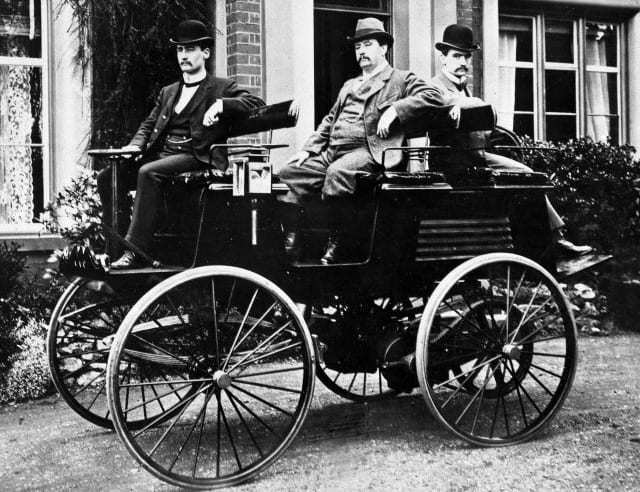Thomas Parker was nothing short of a genius inventor who revolutionized several aspects of life in England. He was even described as “the Edison of Europe” because of the things he was able to accomplish. But Thomas Parker was not always recognized as being a brilliant engineer, and he came from rather humble beginnings.
Thomas Parker was born on December 22, 1843 in Coalbrookdale, Shropshire. His father was moulder at the Coalbrookdale Ironworks, and as a young child Thomas worked in the ironworks while attending school. He always had a flair for creating things, and in 1857 he made a small steam engine, and in 1859 he made a violin. His interests were always varied and he would find a way to create things that fit his changing interests. In 1862 he became a moulder like his father. It was a job that his family had performed for generations. His direction in life changed when he was sent to the 1862 International Exhibition in London as a representative of the Coalbrookdale Ironworks. There saw some of the great technology of the time including the wet battery and the electric telegraph, which would inspire his later endeavors.
He moved to Birmingham that same year in order to increase his experience as a moulder. He got married to Jane Gibbons, the daughter of an engine-driver. Together they moved to Manchester where Parker was able to attend chemistry lectures by prominent scientists including Henry Endfield Roscoe. He returned to Coalbrookdale in 1867, working as foreman for a short time before being granted the position of chemist in the electroplating department. His new position inspired him and gave him the opportunity to create some of his first major inventions.
In 1867 Parker worked with a machinist at Coalbrookdale in order to create a new and improved steam pump. They received a patent for “Parker and Weston’s Patent Pump” and it was awarded a medal at the International Inventions Exhibition of 1885. The steam pump became solely manufactured by the Coalbrookdale Company. Parker continued working in the electroplating department and there he saw a way to improve the process. He replaced the battery cells with a large dynamo that he designed and built himself. This is believed to be the first time that a dynamo was ever used for this purpose.

His job at Coalbrookdale never stopped giving him opportunities to invent new creations. In 1880 the Kyrle Society increased awareness about the negative effects of coal smoke in cities. So Parker invented the “Kyrle Grate,” which was designed to allow anthracite coal to be burned inside of it. His grate won a silver medal at the Smoke Abatement Exhibition in 1881.
After the grate, he invented a gas engine, and then he moved on to the lead-acid battery which was invented by Gaston Planté. Parker believed that the battery could be improved, and in 1882 both Parker and Gaston Planté filed for patents for the same improvement to the lead-acid battery. Both patents were granted. Parker later decided to buy out Planté’s interest in the process.
Parker never slowed down with this inventions and improvements. He made improvements to alternators and he was involved with working on the electric tramway at Portrush in Northern Ireland. It became the first electric tramway in the world to powered by hydroelectricity. In 1882, Parker, working with Paul Bedford Elwell, took out patents for improvements to electric lighting and dynamos. That same year he left Coalbrookedale to create a company with Elwell to manufacture electrical equipment.
What he created next was years before its time, and it stunned the world.

